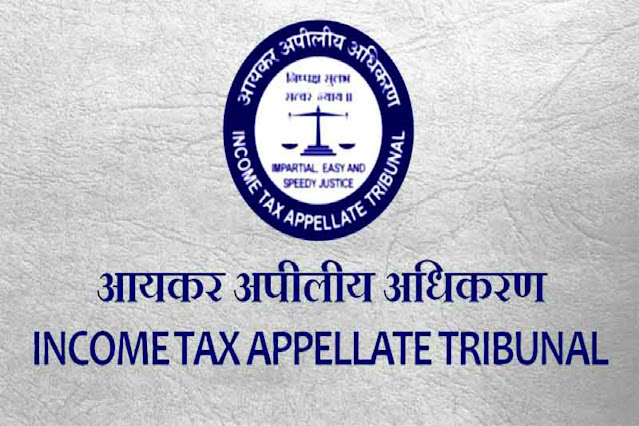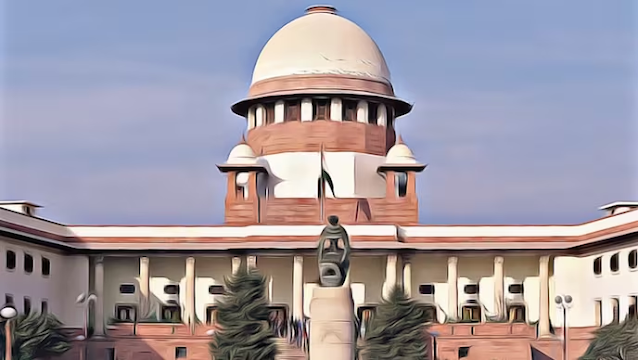Ravi V. Malimath, J@mdashThe case of the plaintiff is that he is the absolute owner of the suit schedule property bearing Sy. No. 88 measuring 30 guntas as described in the schedule. It is his case that he is cultivating the suit schedule property since long time under Bagar Hukum. On considering the same, the Government have regularized his unauthorized cultivation on 23-8-1994. The saguvali chit has been issued in his favour. Eversince the date of grant, the plaintiff has become the absolute owner of the suit schedule property. Prior to the grant, the lands have been measured and he was put in possession. A sketch was also prepared. A separate block number was allotted. The block Number allotted to the plaintiff�s property is block No. 5 measuring 30 guntas. None of the defendants have any right, title and interest over the suit schedule property. They having the back up of some political leaders, are attempting to interfere with the plaintiff�s possession of the suit schedule property. The daughter of the 1st defendant was Chairman of Panchayat. The defendant�s two sons are working in the Telephone Department. Therefore the defendants are financially and politically sound. By taking undue advantage of the plaintiff�s position, the defendants have entered into the suit schedule property on 24-8-1987 and constructed a hut in the area measuring 20 x 20 ft. The same was done within two to three hours. A complaint was also lodged before the police station, but nothing came of it. Hence, the instant suit was filed seeking for a declaration that the plaintiff is the absolute owner of the suit schedule property and for vacant possession of the same. On service of summons the defendants entered appearance and denied the plaint averments. Their contention is that the plaintiff was never the owner in possession of the suit schedule property. They denied that the Surveyor has identified the property. They denied that the plaintiff has paid taxes. It is their case that the defendants are in possession of the land to an extent of 60 x 200 ft. In the said Survey Number, he has been residing for more than 20 years. They have constructed a house. Thereafter they have grown coconut trees and other vegetation in the said land. The land has not been granted to the plaintiff by the Government. Only with an intention to evict the defendants the instant suit has been filed. The plaintiff has been on this property for a long time. He has acquired the right to the property by using the property for a long time.
2. Based on the pleadings the trial Court framed the following Issues:-
"1. Whether the plaintiff proves identity of the suit schedule property?
2. Whether the plaintiff proves that he is the lawful owner over the suit schedule property as alleged in the plaint?
3. Whether the plaintiff proves that the defendants have trespassed over the suit schedule property and have taken possession of property measuring 20 X 20 feets in the southern edge of western portion of suit schedule property forcefully and defendants have constructed thatched hut therein as alleged in the plaint?
4. Whether the plaintiff is entitled for relief of declaration as prayed in the plaint?
5. Whether the plaintiff is entitled for relief of vacant possession over the property measuring 20 x 20 feets in the southern edge of western portion of suit schedule property from the defendants, as prayed in the plaint?
6. Whether the plaintiff is entitled for mesne profit as prayed in the plaint?"
The plaintiff was examined as P.W. 1 and relied on 6 documents. The defendant No. 1 was examined as D.W. 1 and there were no documents marked in that behalf. Issues, 1, 2 & 3 were held in the affirmative. The other issues were held in favour of the plaintiff. Consequently the suit was decreed. It was declared that the plaintiff is the absolute owner of the suit schedule property. Aggrieved by the same, the defendants filed an appeal. The first appellate Court allowed the appeal set aside the Judgment & decree of the trial Court and dismissed the suit of the plaintiff. Hence, the present second appeal by the plaintiff.
3. By the order dated 5-12-2012 the appeal was admitted to consider the following substantial question of law:-
"1. Whether the judgment and decree passed by the Lower Appellate Court in allowing the appeal preferred by the defendants on the ground that the plaintiff has failed to establish the identity of the suit schedule property and reversing the judgment and decree of the trial Court wherein it has decreed the suit of the plaintiff declaring him as a owner of the suit schedule property and he is entitled for the possession of the property which is in the illegal occupation of the defendants, are sustainable in law?" and
2. To consider any other substantial question of law which may arise for consideration while hearing the appeal.?"
The learned counsel for the appellant contends that the impugned order is bad in law and liable to be set aside. That the appellate Court committed an error in considering Ex. P. 5, which is the copy of the sketch prepared by the surveyor. That the first appellate Court wrongly dismissed the suit, even though not a single scrap of paper was produced by the defendants to defend their case. Admittedly, the land belongs to the Government. That the plaintiff has relied upon various documentations to show that the land has been granted in his favour and therefore he has become the owner in possession of the same. The first appellate Court therefore committed a perversity in dismissing the suit of the plaintiff.
4. On the other hand Sri G.M. Nataraj, the learned counsel appearing for respondents 2 & 3 defends the impugned order. He contends that there is no error that calls for interference. That the plaintiff has not been able to show that the land was granted by the Government. That the saguvali chit is not sufficient to prove the case of the plaintiff. That whether the defendants leads any evidence or not cannot be a ground to decree the suit of the plaintiff. In support of his case he relies on the Judgment in the case of
Reliance is also placed on the Judgment in the case of
5. Heard learned counsels and examined the records. In order to prove his case, the plaintiff has relied on various documents. Ex. P-1 is the certified copy of the RTC extract. The same is for the period from 1996-97 onwards. The same would show the name of the plaintiff and that he has been in cultivation of the lands in question. Ex. P-2 is the certified copy of the mutation extract. It would also indicate the name of the plaintiff. Ex. P-3 is the endorsement issued by the police wherein the complaint was lodged by the complainant with regard to the encroachment made by the defendants. Ex. P-4 is the original saguvali chit. Ex. P-5 is the sketch prepared by the surveyor and Ex. P-6 is the original sketch. The documents would indicate that the saguvali chit was issued to the plaintiff on 23-8-1994. The same has been granted in favour of the plaintiff. The documents at Ex. P-4 and 5 is the original saguvali chit identifying the plaintiff as well as the property allotted to him. The finding of the trial Court is that the same does not narrate the boundaries to the property in question. That the same cannot be identified in terms of Ex. P-4.
6. I have considered at length Ex. P-4. The same is relatable to the sketch prepared by the surveyor in terms of Exs. P-5 & 6. Therein the extent of the property and location of the property is also identified. The same cannot be doubted. The plaintiff has narrated the schedule to the plaint properties. It would indicate that the property in question namely, block No. 5 situated in Sy. No. 88 of Yadahalli of Sagar Taluk to an extent of 30 guntas has been granted by the government in favour of the plaintiff. The pleadings, the evidence and the documents support one another. Therefore it cannot be said that the trial Court was justified in holding that there was no identification of the property. There is no material in order to substantiate the plea of the defendants. The saguvali chit clearly enunciates that the land has been allotted to the plaintiff. There is no documentation produced by the defendants in support of their case. Even if no documents are produced, it does not mean that the plea of the plaintiff could be allowed. In terms of Ex. P-1 which is the copy of RTC Extract, Ex. P-2 is the copy of mutation Extract, Ex. P-3 is the endorsement issued by the police, Ex. P-4 is the original saguvali chit, Ex. P-5 is the sketch and Ex. P-6 the original sketch. I have no hesitation to hold that the land has been granted to the plaintiff to the extent as narrated therein with respect to the schedule.
7. I�am of the considered view that the first appellate Court committed a blunder in reversing the finding of the trial Court. The trial Court having considered the evidence, rightly held that the plaintiff has established his case with regard to the grant of the land. Hence, I�am of the view that the finding recorded by the appellate court is therefore erroneous.
8. So far as the Judgment relied upon in the case of RAMDAS is concerned, there is no dispute with regard to the same. That substantial evidence having been let-in by the parties, the said judgment would not be of any avail to the defendants. In the case of PRATIBHA SINGH AND ANOTHER, it was a case wherein there was a dispute with regard to the identification of the description of the property. I�am of the considered view that the same is not an issue for consideration herein. The property is identified in terms of Saguvali chit. The same is identified by the plaint schedule as mentioned by the plaintiff. The same are relatable to the documents on record. Therefore it cannot be said that the property of the plaintiff cannot be identified. Hence, relying on both the Judgments, I�am of view that the same would not come to aid of the respondents defendants. The plaintiff having established that the defendants having encroached upon the property is entitled for the decree that he has sought for. Consequently, the substantial question of law is answered by holding that the Judgment and decree of the first appellate Court is perverse in holding that the plaintiff has failed to establish the identity of the suit schedule property.
In view of answering the substantial question of law the appeal is allowed. The Judgment & decree of the passed in R.A. No. 145/2001 passed by the learned Additional Civil Judge, (Senior Division) & JMFC, Sagar, is set aside. The Judgment & decree of the trial Court in O.S. No. 485/1999, by the learned Additional Civil Judge, Sagar, is restored.
No costs.

